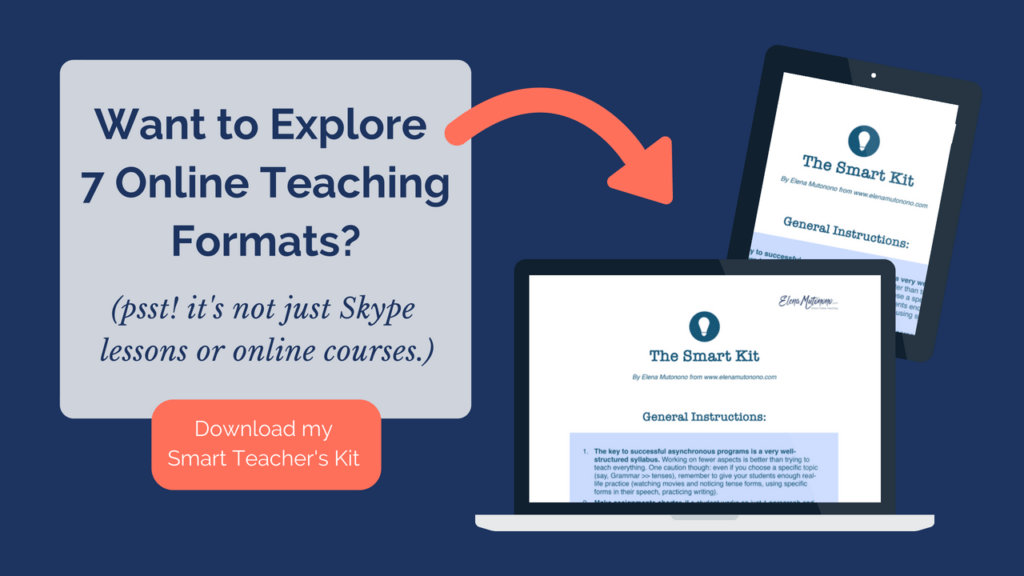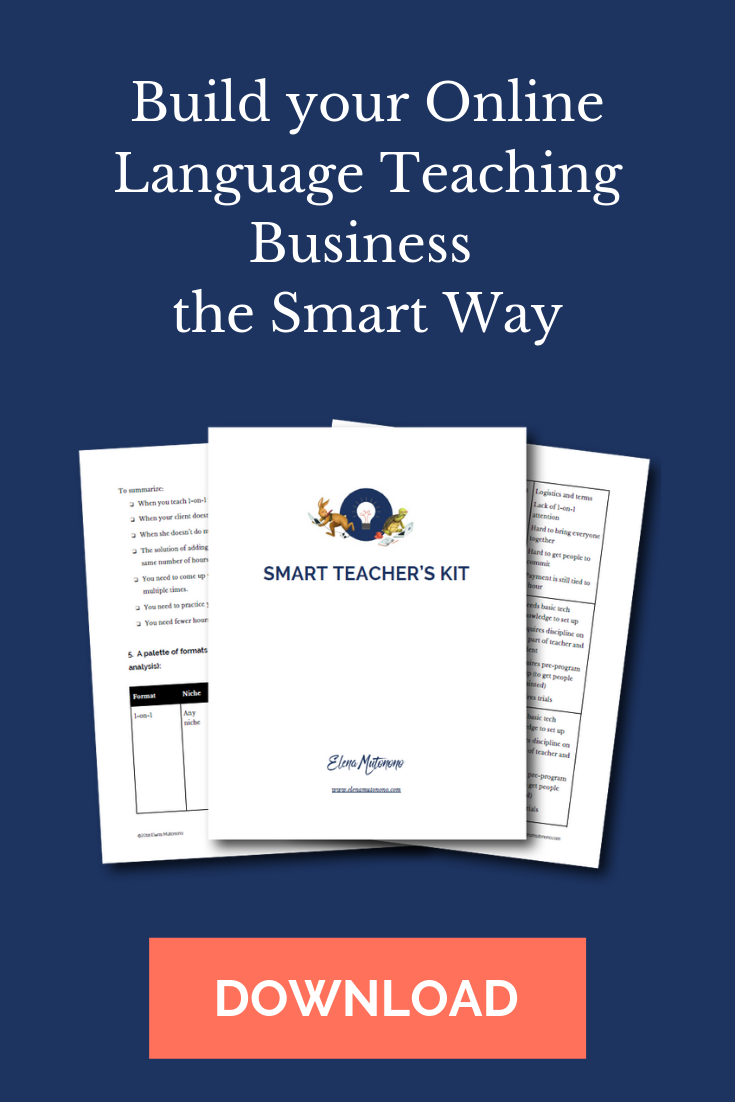You’ve spent months working on your brand new online course. You’ve read marketing books. Watched webinars. You’re excited and filled with entrepreneurial fervor.
Now you publish your course so it’s visible to thousands of potential clients online, and you wait for your fish to “bite.” The waiting lasts forever, and no sales follow.
You wonder if you did everything “right.” Perhaps you skipped some steps in the “proven blueprint for rapid sales that hit 6-figures?” What if nobody really needs your course?
You seek help. Facebook forums give you 101 strategies, some of them contradicting one another, most of them using the same phrases you’ve heard many gurus say in their free webinars:
- Find your niche
- Draw your ideal client
- It’s all about pricing
- It’s all about value
- Don’t give too much value
- Don’t give too little value
- Build your funnel
- Build your list
- Use these words
- Don’t use those words
Your head’s spinning, and you tell yourself for the umptieth time that you are just a teacher, not a marketer.
I’ve been there a few times, and I know how overwhelm can keep you from smart troubleshooting that allows you to find workable solutions and make sales in the future. So in this post I’ll cover 3 things you need to turn your attention to when your sales suck. Let’s go.
1. Fake Niche
You know you “need a niche,” and you think you’ve found one. The trouble is, it’s fake. Hence your course doesn’t sell. You’ve followed advice to find a fake niche. You’ve heard it everywhere:
- Find the niche that is “in.”
- Choose the niche that pays money.
- Who cares for creative writing? Test-prep essay is your best bet.
- Business English. ESP. ACT. FCE. TOEFL.
When you choose your “niche” based on your idea of how much people will pay you, you’ve immediately devalued your expertise. You’ve just put “it’s all about money” at the front of your brand, and like in that forehead detective game, everyone but you sees what the post-it on your forehead says about your business.
It’s not your fault that you’ve followed this niche finding trend. Many gurus guilt you into thinking that you can’t choose your niche based on what you love. But choosing your niche based on “trends” will make you sound either aggressive or fake.
What should you do instead? I love the way Kevin Roberts puts it in his book Lovemarks: The Future Beyond Brands;
“Stop racing after every new fad and focus on making consistent, emotional connections with consumers. If you stand for nothing you fall for everything.”
Instead of following the path of least resistance and picking up the “best-selling” niches in the supermarket of online language teaching trends, focus on your clients. Find out what they love, what they need, and how you help them achieve that.
Think why you care about helping them (hint: it’s not about them paying you X amount for your work) and how you do it better than others.
2. Obsession with Mistakes
In her guest post on how to grow your Instagram tribe, Elfin Waters shares this amazing insight; “ESL teachers don’t seem to get great results on Instagram because they’re so taken up with teaching all the time. They forget to sell the most important thing: the dream.”
You don’t have to go too far to see that it’s true not only for ESL teachers but for teachers of other languages. Check out all of our “popular” social media accounts! We think, well, if it’s working for them, it will work for me, too.
I used to do that as well. As though language learning was all about accuracy and “cleanliness.”
Such an OCD approach to teaching a language when we slap our audience’s mouth (figuratively speaking) every time they mispronounce a word or choose the “weak collocation” or jumble up their direct word order makes our brand negative and reactive.
Instead of “helping out,” we’re shutting people down. I have nothing against mistake correction, but why put it on every piece of content you produce? Is learning a language only about getting rid of mistakes?
Building a brand around mistakes works like magic because it appeals to your audience’s fears. But fear doesn’t build loyalty. Love does.
Inspire your audience. Speak to their dreams, not fears. Fears are the surface level, so digging down to dreams will take longer, but it’s worth it in the end. Fear-driven brands are repulsive, and once your clients see that they can get the same value from someone who doesn’t humiliate them, they will.
Your online course didn’t sell? Check these 3 areas for smart troubleshooting.Click To Tweet
***
Need more focused guidance on how to launch your product? Check out my mini-course:
3. Diluted Core Message
The core message of your brand is born out of a particular pain that you want to ease. Classroom language teaching is about rules, choice of textbooks, a set of “props” and methodologies.
You can’t transfer this model online, not unless you want to build a business through teaching a language. If you focus only on the “how,” your sales will suffer.
An online business for a language teacher has to be about her core message, the “why.” It’s the irreducible minimum, the lifeblood of the brand.
It’s as essential as a conflict is for a good story. Without a conflict there is no story. Without a core message there is no brand, no loyalty, no community, no consistent sales.
Without the core message, a business is dead. It turns into a long and lifeless reference book of information, void of inspiration and action. It doesn’t change the world. It doesn’t make people want to be a part of something greater. It’s just offering “all the verbs of motion” so people know all the verbs of motion. It speaks to the head, not to the heart.
“The essential difference between emotion and reason is that emotion leads to action while reason leads to conclusions.” ~ Donald Calne
Solve this by finding your core message. The challenging part in this process is all the digging you have to do — inside yourself. Self-searching is the foundation of a business that lives in harmony with its owner. It’s a secure brand that doesn’t compare or jump the gun too soon. It’s the brand that knows its value.
Example: Barbara Rocci began asking herself what it really means to Be Italian. Her amazing site, Time to Be Italian, wasn’t as clear on its message. Diving into the essence of being Italian, she realized that her desire was to help people speak Italian spontaneously. This is when the idea of “time to be” began to communicate greater urgency, and being Italian found its new definition as (finally) using those word lists that people memorized but never knew how to say them naturally.
What now?
There are many other reasons why your course won’t sell. Sometimes it’s because you haven’t taken the time to get to know your audience and assumed that you know what it needs. Sometimes it’s because your business hasn’t been around for too long, and you can’t rush your community.
Sometimes it’s because people are not sure if you’re seriously in it for the long haul (your dedication to your work inspires people to be a part of it, too).
If you’re stuck with bland 1:1 lessons and would like to turn it into a business model that scales, I invite you to check out my One to Infinity Workshop.
If you’re just beginning your online teaching journey and this message resonated with you, it’s a sign that you are a part of our tribe. Learn more and join to keep making progress, even if your business is nothing but a side gig right now.
What are your sales struggles? Please share in the comments!
The post was updated in May, 2021.




 Welcome to my nook where *Big Magic* happens. My name is Elena Mutonono, I help small business owners package their services as digital products and sell them online. I want you to work smarter, not harder. Increase your impact beyond your current face-to-face clients. Grow your business as you reach more people all over the world.
Welcome to my nook where *Big Magic* happens. My name is Elena Mutonono, I help small business owners package their services as digital products and sell them online. I want you to work smarter, not harder. Increase your impact beyond your current face-to-face clients. Grow your business as you reach more people all over the world.








“Inspire your audience. Speak to their dreams, not fears. Fears are the surface level, so digging down to dreams will take longer, but it’s worth it in the end. ” –Definitely needed that message today…THANK YOU!
Thanks, Ally! I believe inspiration works wonders, but it does take longer than we expect. Glad I inspired you!